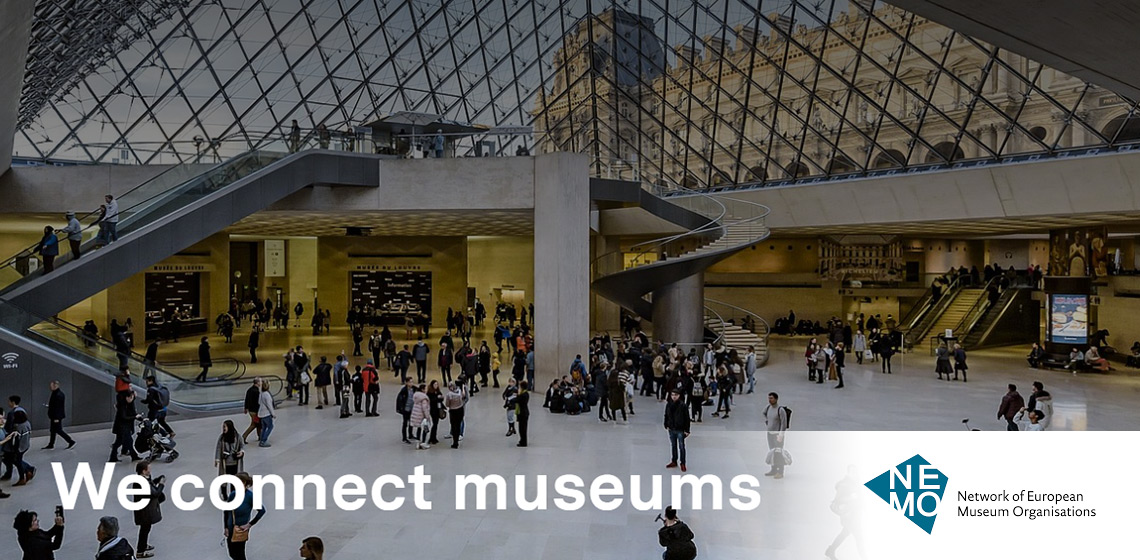The content is published under a Creative Commons Attribution Non-Commercial 4.0 License.
Unreviewed Mixed Matters Article:
Event Review: NEMO Training Course 'Re-thinking Museum Practice for 21st Century Visitors' by Lisa Baxter from The Experience Business

Being an academic who loves her job, I tend to forget why I do what I do. When I find myself going down a rabbit hole of fun medieval research and get the urge to create new interpretative materials, guided tours or events (or even get lost in administrative work), I forget to focus on the guest – what they want and what they need. My main focus is getting as much history and love for history into the guests’ minds. Their need, however, might be to know where the toilets are or what the program of the day is before they are open to new input and knowledge.
"There is no I in curator" (Lisa Baxter)
As curator and head of interpretation at a cultural attraction and event place, it is my job to make sure that the visitor is guided safely through their visit: from the carpark until they leave the museum again. The entire experience is important, and if the toilets are hard to find or the food is bad, so will the experience – no matter how good the guided tours are or how fantastic the live interpreters do their job.
I have always been fascinated with visitor experience, visitor types and I love John Falk in a very fan-girlish way. Still I forget this information during a busy season or sometimes I lose the overview of the entire experience.
So when I got the chance to participate in a course focusing on visitor experience hosted by NEMO (Network of European Museum Organizations), I jumped on it immediately.
Our teacher was the very skilled Lisa Baxter from The Experience Business, who has worked with museums all over the world creating good visitor experiences from start to finish. She gives workshops for all employees (and I mean all – including cleaning personnel, students and so on: because everyone can contribute!), makes SWOT-analyses and creates whole museum experiences.
The course was held online and was divided into three sessions each lasting 2 hours. Each session had a theme and a focus. Homework had to be done and there were several cases and small workshops during the sessions.
“The visitor experience is the end-to-end interaction between a cultural organization and a visitor” (Lisa Baxter)
The theme of the first session was “Brand Experience” and the key word was “intentionality”, focusing on the practice of strategic visitor experience design and management, visitor experience models and an introduction to the brand experience framework.
The second session focused on “Visitor Sensibility”, and the keyword was “empathy”.
During this session we worked with who our visitors are, creating personas – a fictional character representing a type of visitor – looking at visitor journey mapping, looking at the visitor hierarchy of needs and of course working with John Falk and his visitor types. As homework we had to take the route our visitors experience – Visitor Journey Mapping– and try to see the museum through their eyes: is the signing good enough, are toilets easy to find and are they clean, how long was the line to get food? All the little tidbits that are really important when creating a good visitor experience.
I’m not afraid to say that I did find a lot that could be changed at my museum, some will take a lot of work, but other can be easily implemented.
Session three focused on the “Creative Capacity” and the keyword was “Design”.
During this session we explored how to make a design plan for a new exhibition or visitor experience. It was implied that when building a new museum, creating a new exhibition or developing a new strategy, everyone at the company has a valued opinion and could contribute.
It is important to share the process in order to find possible errors. As Lisa Baxter stated, “Fail early, fail well, fail cheaply!”. Finding a mistake early in the process makes it easier to change, and thereby makes it a lot cheaper to create a better outcome. We also did a really difficult exercise. Part of my job is to foresee problems before they become a problem, which means that I can sometimes wear the “No-hat” a bit too much. If an idea comes up, I instantly see the challenges and logistics etc. Lisa made us do an exercise that I know actors also practice: you are only allowed to say “yes and” to anything coming your way.
It is a great and easy tool in brain storming – just say yes.
Get all the ideas down on paper and when that is done you can sort out the bad ideas. The creative exhibition and interpretation making process needs the “yes and” space to flow.
“Your work is an imaginarium – allow yourself to be creative!” (Lisa Baxter)
Way too often we end up in the “No but” space because of the workload we already have, because of being burned out and maybe also because of past experience.
One of the things I have learned from this course is that it is important to allow yourself some free space for creativity.
After all, what we are doing is trying to get other people to interact, to be creative and to feel inspired, so if we ourselves are not inspired and creative how can our product be?
It was a highly inspirational course and although I already had experience in some of the themes, I really needed the reminder and the new tools to get my inspiration flowing again.
We create experiences and journeys for our visitors – let’s make them great!
Also – doing what we do involves teamwork.
“There is no I in curator”: thanks for that quote Lisa!

